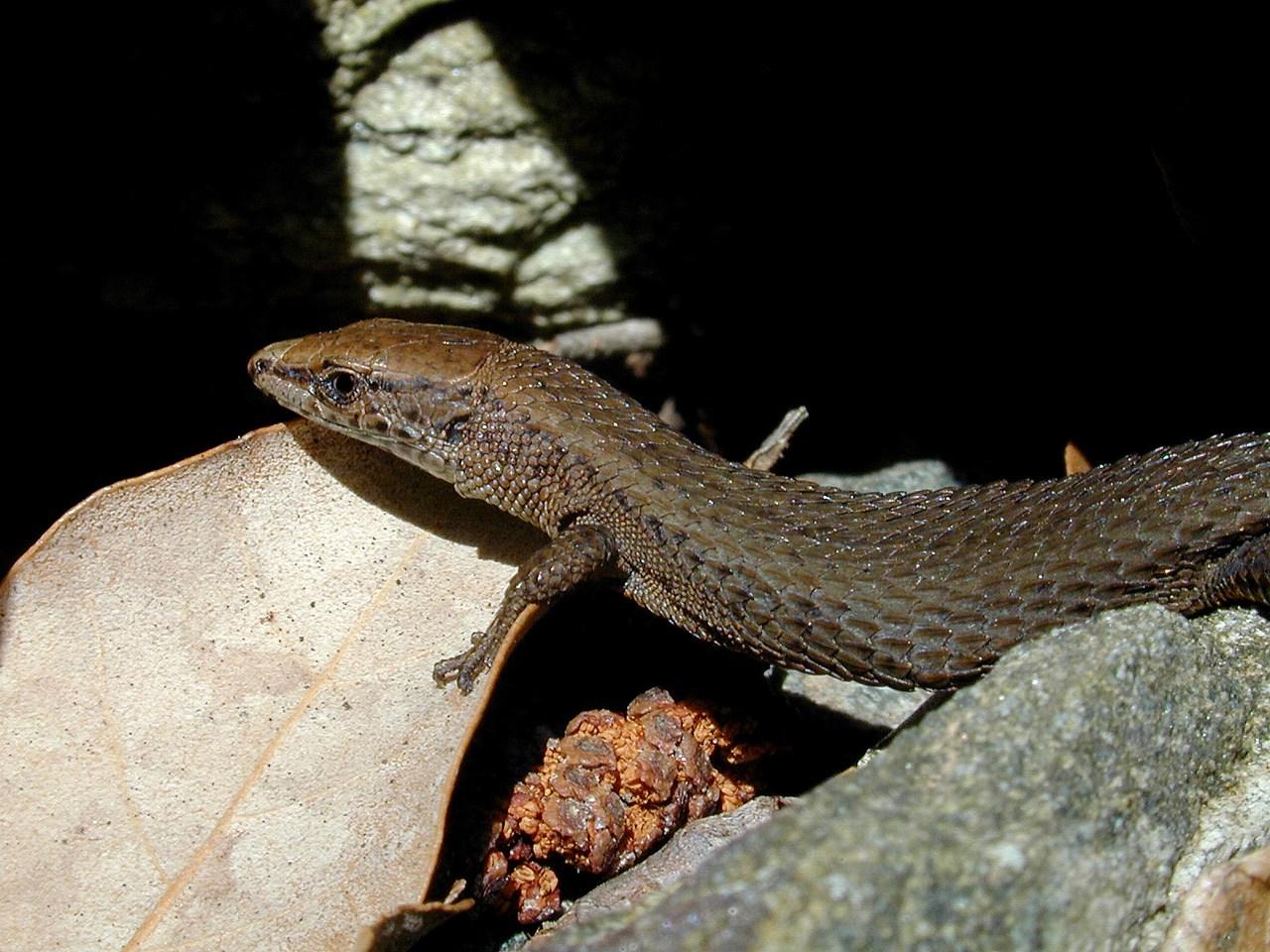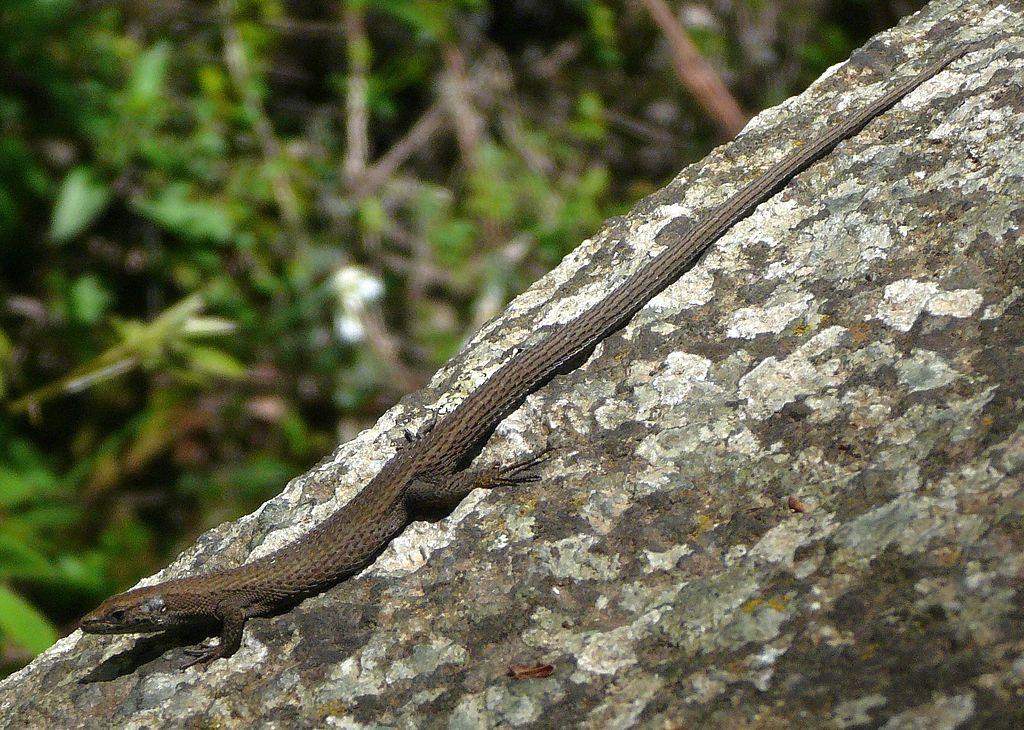Pygmy algyroides or the Pygmy keeled lizard
Algyroides fitzingeri
Algyroïde de Fitzinger or Algyroïde tyrrhénien
The distribution range of Algyroides fitzingeri is restricted to Corsica and Sardinia.
This
is
a diminutive lizard
lizard
that
usually
measures less than 12 centimetres, two-thirds of which is
for
the tail
which
is rather thick. Its head and body are flattened in appearance, and
its dorsal and lateral scales are rough, with large, keeled, pointed
scales on
the back and rectangular on the tail giving
it the appearance of a fir cone.
The scales of the head are smooth, with a very clear demarcation
between them and those of the body, at the level of the neck.
The legs are typical of Lacertidae, thin, smaller at the front and provided with large fingers terminated by a claw, especially on the hind legs.
They have a solid colouration that is dark brown, dull brown, brown, gray or almost black, sometimes with a black vertebral line. The ventral surface is yellow to orange - mainly in males - whitish towards the throat.
They mainly frequent forest or dense vegetation environments, but can also be found in scrub, crops, rocky slopes or even low walls, with a preference for partial shade areas and close to water. They are found from sea level up to 1,400 metres altitude in Corsica and are present on almost all of the island with the exception of the eastern coast.
They
are
an
oviparous
species.
Mating occurs quickly at the end of wintering and the female lays
four eggs
of
about 8 mm
in
May or June, which hatch between late July and early September.
Once considered scarce they are now considered of least concern having propbably been overlooked due to their small size and unusal appearance.

